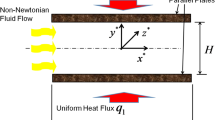Abstract
A self-organizing radial basis function (RBF) neural network (SODM-RBFNN) was presented for predicting the production yields and operating optimization. Gradient descent algorithm was used to optimize the widths of RBF neural network with the initial parameters obtained by k-means learning method. During the iteration procedure of the algorithm, the centers of the neural network were optimized by using the gradient method with these optimized width values. The computational efficiency was maintained by using the multi-threading technique. SODM-RBFNN consists of two RBF neural network models: one is a running model used to predict the product yields of fluid catalytic cracking unit (FCCU) and optimize its operating parameters; the other is a learning model applied to construct or correct a RBF neural network. The running model can be updated by the learning model according to an accuracy criterion. The simulation results of a five-lump kinetic model exhibit its accuracy and generalization capabilities, and practical application in FCCU illustrates its effectiveness.
Similar content being viewed by others

References
KHOSHJAVAN S, MAZLOUMI M, REZAI B. Artificial neural network modeling of gold dissolution in cyanide media [J]. Journal of Central South University of Technology, 2011, 18(6): 1976–1984.
TAN Jun, CHEN Xing-shu, DU Min, ZHU Kai. A novel internet traffic identification approach using wavelet packet decomposition and neural network [J]. Journal of Central South University, 2012, 19: 2218–2230.
ILIYAS S A, ELSHAFEI M, HABIB M A, ADENIRAN A A. RBF neural network inferential sensor for process emission monitoring [J]. Control Engineering Practice, 2013, 21(7): 962–970.
U Lean, LAI Kin-Keung, WANG Shou-yang. Multistage RBF neural network ensemble learning for exchange rates forecasting [J]. Neurocomputing, 2008, 71(16/17/18): 3295–3302.
GAN Min, PENG Hui, CHEN Li-yuan. A global-local optimization approach to parameter estimation of RBF-type models [J]. Information Sciences, 2012, 197: 144–160.
LI Wei-guo, YU Qian, LUO Ri-cheng. Application of fuzzy analytic hierarchy process and neural network in power transformer risk assessment [J]. Journal of Central South University, 2012, 19: 982–987.
MARSADEK M, MOHAMED A. Risk based security assessment of power system using generalized regression neural network with feature extraction [J]. Journal of Central South University, 2013, 20(2): 466–479.
GAN Min, PENG Hui, DONG Xue-ping. A hybrid algorithm to optimize RBF network architecture and parameters for nonlinear time series prediction [J]. Applied Mathematical Modelling, 2012, 36(7): 2911–2919.
NIROS A D, TSEKOURAS G E. A novel training algorithm for RBF neural network using a hybrid fuzzy clustering approach [J]. Fuzzy Sets and Systems, 2012, 193: 62–84.
BILLINGS S A, WEI H L, BALIKHIN M A. Generalized multiscale radial basis function networks [J]. Neural Networks, 2007, 20(10): 1081–1094.
LI Quan-shan, ZHANG Yi-shan, CAO Liu-lin, LIN Xiao-lin, CUI Jia. An improved radial basis function network for structural reliability analysis [J]. Journal of Chemical Industry and Engineering Society of China, 2011, 62(8): 2345–2349. (in Chinese)
ZEYDAN M. The comparison of artificial intelligence and traditional approaches in FCCU modeling [J]. International Journal of Industrial Engineering: Theory, Applications and Practice, 2008, 15(1): 1–15.
MIHEŢ M, CRISTEA V M, AGACHI P Ş. FCCU simulation based on first principle and artificial neural network models [J]. Asia-Pacific Journal of Chemical Engineering, 2009, 4(6): 878–884.
TAŞKIN H, KUBAT C, UYGUN Ő, ARSLANKAYA S. FUZZYFCC: Fuzzy logic control of a fluid catalytic cracking unit (FCCU) to improve dynamic performance [J]. Computers & Chemical Engineering, 2006, 30(5): 850–863.
VIEIRA W G, SANTOS V M L, CARVALHO F R, PEREIRA, JAF R, FILETI A M F. Identification and predictive control of a FCC unit using a MIMO neural model [J]. Chemical Engineering and Processing: Process Intensification, 2005, 44(8): 855–868.
YEH T M, HUANG M C, HUANG C T. Estimate of process compositions and plantwide control from multiple secondary measurements using artificial neural networks [J]. Computers & Chemical Engineering, 2003, 27(1): 55–72.
HAN Hong-gui, QIAO Jun-fei, CHEN Qi-li. Model predictive control of dissolved oxygen concentration based on a self-organizing RBF neural network [J]. Control Engineering Practice, 2012, 20(4): 465–476.
HAN Hong-gui, CHEN Qi-li, QIAO Jun-fei. An efficient self-organizing RBF neural network for water quality prediction [J]. Neural Networks, 2011, 24(7): 717–725.
FISCH D, HOFMANN A, SICK B. On the versatility of radial basis function neural networks: A case study in the field of intrusion detection [J]. Information Sciences, 2010, 180(12): 2421–2439.
MOODY J, DARKEN C J. Fast learning in networks of locally-tuned processing units [J]. Neural Computation, 1989, 1(2): 281–294.
HAYKIN S. Neural networks: a comprehensive foundation [M]. New Jersey, US: Prentice Hall PTR, 1999: 278–339.
MILLINGTON T M, CASSIDY N J. Optimising GPR modelling: A practical, multi-threaded approach to 3d FDTD numerical modeling [J]. Computers & Geosciences, 2010, 36(9): 1135–1144.
ANCHEYTA-JUÁREZ J, LÓPEZ-ISUNZA F, AGUILAR-RODRÍGUEZ E. 5-lump kinetic model for gas oil catalytic cracking [J]. Applied Catalysis A: General, 1999, 177(2): 227–235.
CHEN Yu-shi. Dynamic modeling and simulation of the riser reactor and the regenerator for FCCU [D]. Xiamen, China: Xiamen University, 2007. (in Chinese)
JIANG Jing-jie, ZHEN Xin-ping, LI Quan-shan, WEI Huan, JIN Qi-bing, PAN Li-deng. An identification method based on the improved NLJ algorithm and its application [J]. Chinese Journal of Chemical Engineering, 2007, 15(1): 88–91.
Author information
Authors and Affiliations
Corresponding author
Additional information
Foundation item: Projects(60974031, 60704011, 61174128) supported by the National Natural Science Foundation of China
Rights and permissions
About this article
Cite this article
Li, Qs., Li, Dz. & Cao, Ll. Modeling and optimum operating conditions for FCCU using artificial neural network. J. Cent. South Univ. 22, 1342–1349 (2015). https://doi.org/10.1007/s11771-015-2651-2
Received:
Accepted:
Published:
Issue Date:
DOI: https://doi.org/10.1007/s11771-015-2651-2



